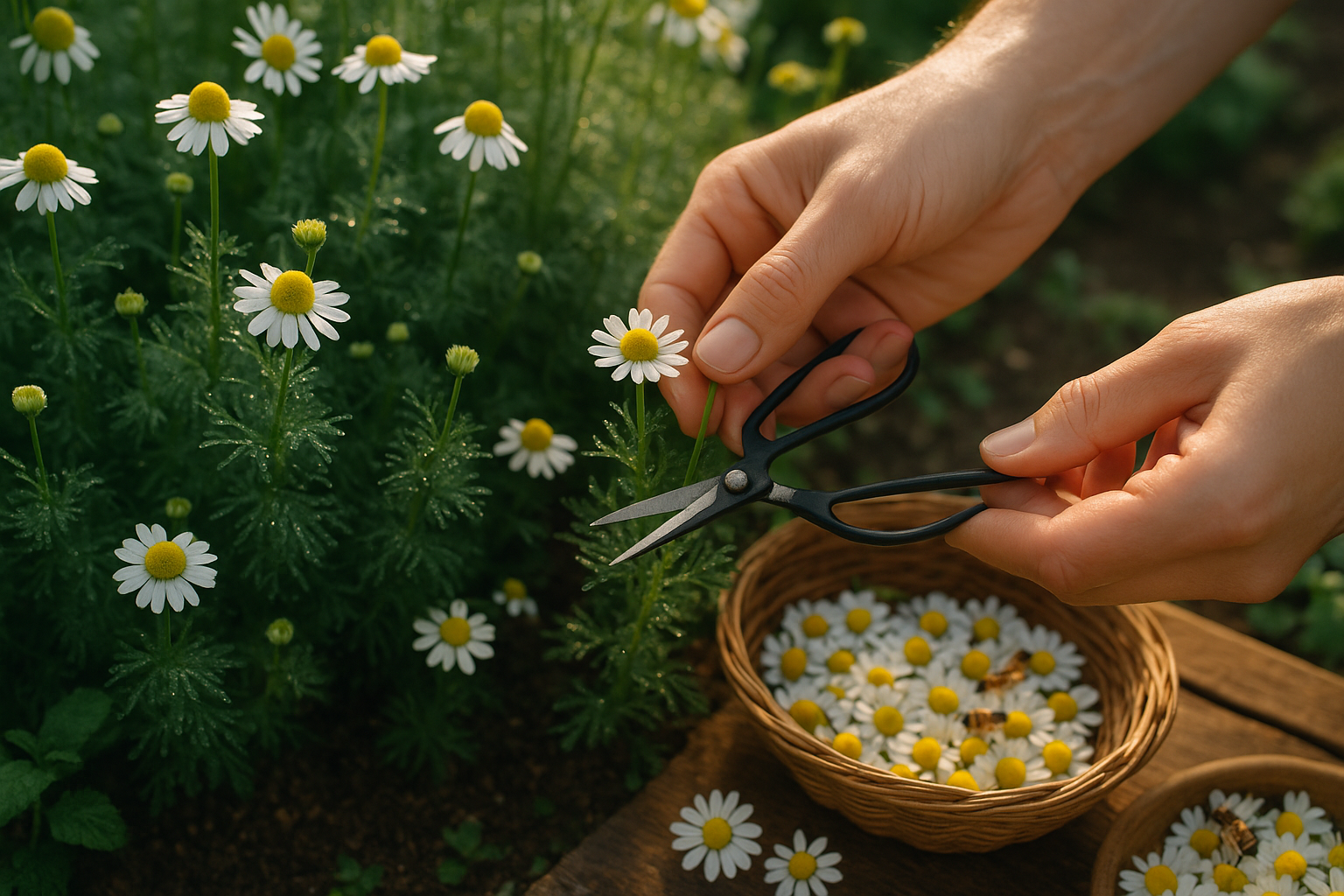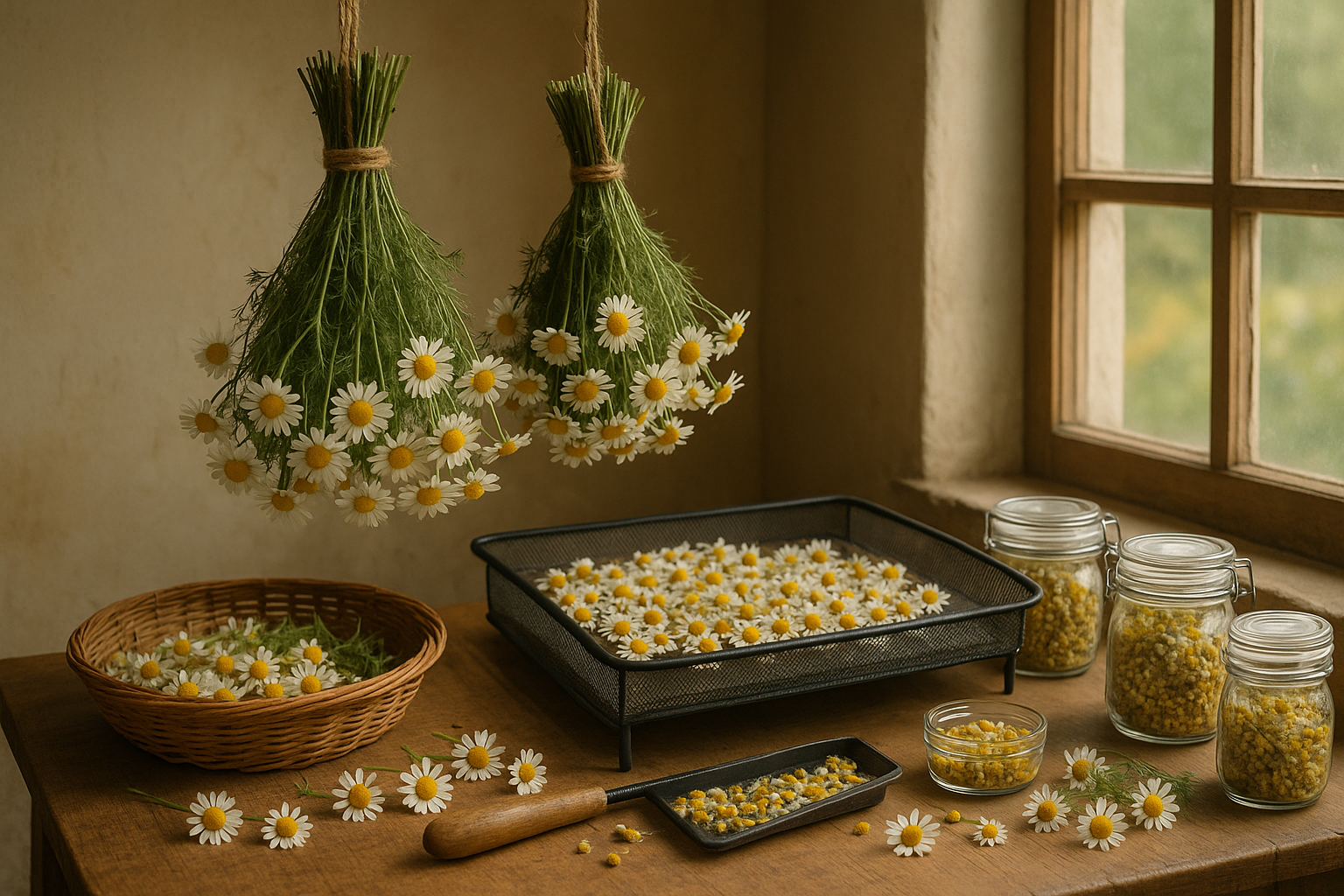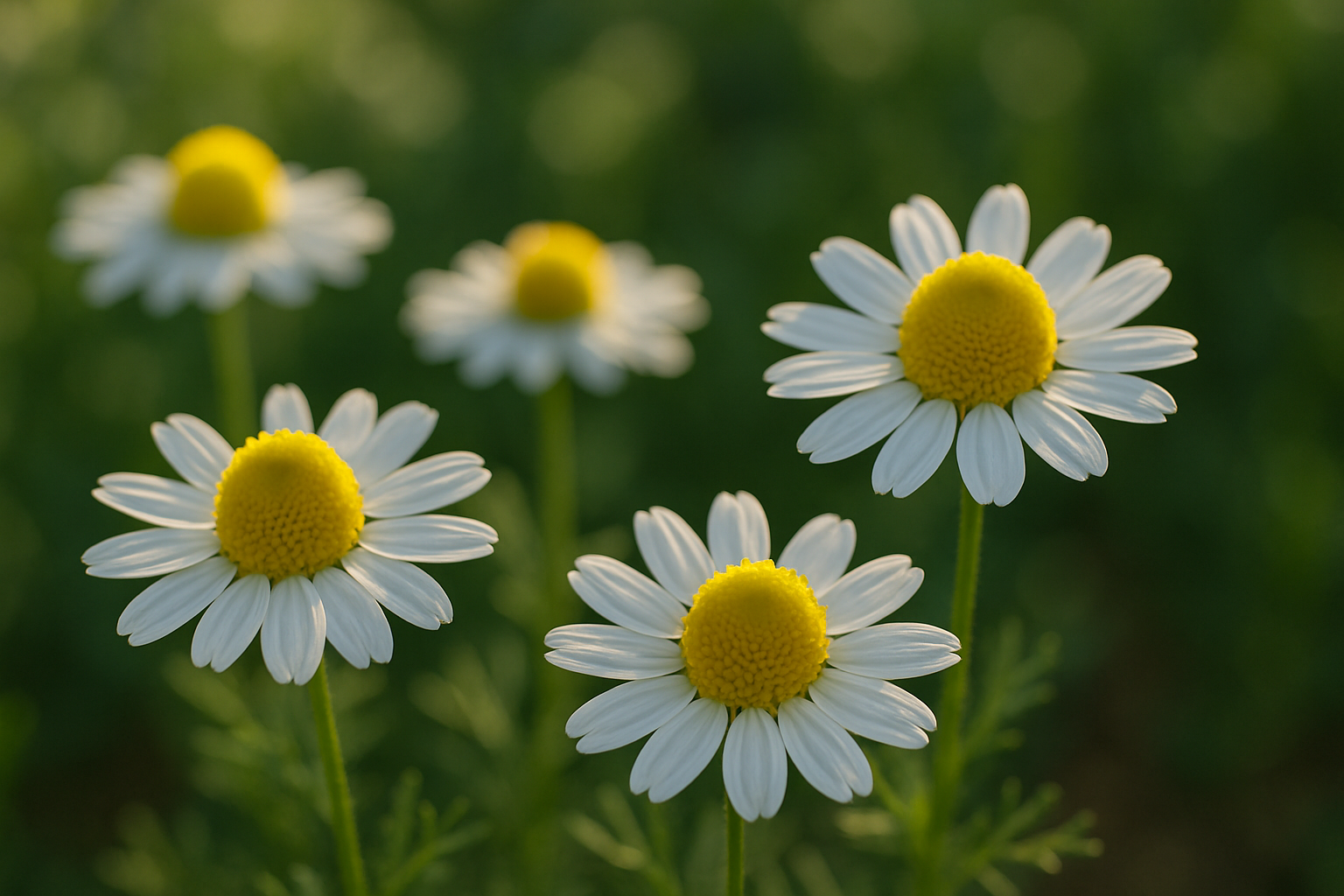Introduction to Chamomile Flowers
Chamomile is a beloved herb cherished for its calming scent, delicate white flowers, and a wide range of uses—from soothing teas that help you relax after a long day to gentle skincare remedies and even natural sleep aids. But if you’re curious about how to harvest chamomile to get the most benefit from your plants, timing and technique are critical.
Picking chamomile flowers at the right moment and using the right methods will ensure you capture their best flavor, aroma, and potency, whether you want to brew a fragrant cup of tea, infuse bath products, or create a calming salve.
In this article, you’ll discover when chamomile flowers are at peak bloom, how to identify the perfect harvesting window, and step-by-step guidance on gathering and drying your crop for maximum quality. We’ll also share real-world tips for beginners—including how and where to snip the delicate blossoms—and advice to avoid common mistakes that can reduce your yield.
Whether you’re growing chamomile in a sunny backyard patch or a few pots by your windowsill, this guide will set you up for a bountiful, aromatic harvest you can enjoy all year round.
Identifying the Right Time to Harvest Chamomile

Knowing when to harvest chamomile is the key to getting the most flavorful and potent flowers from your garden. The ideal time to pick chamomile is when the flowers are fully open and at their peak—that is, when the white petals have spread out around the yellow center but haven’t started to droop or curl backward. This stage is crucial; if you wait too long and the petals begin to curve downward, the quality of the flavors and oils declines, resulting in less aromatic teas and remedies.
In most climates, chamomile starts blooming in late spring and continues through early summer. For many gardeners in temperate regions, the main harvest window falls between late May and early July. If you live in a warmer area with mild winters, you might see earlier blooms, so keep a close eye on your plants as early as April.
To determine the best harvest day, inspect your chamomile patch daily once the buds begin to appear. Look for flowers that are open, flat, and fresh—avoid those with petals that are curling back, yellowing, or showing signs of insect damage. Mornings are the best time to pick, as the flowers are perkier and their essential oils are most concentrated before the afternoon sun.
It’s helpful to use small scissors or gently pinch off the flower heads to avoid damaging the rest of the plant, encouraging more blooms throughout the season. Many gardeners do multiple small harvests, returning every few days as new buds open. By staying attentive and harvesting at the right moment, you’ll enjoy the sweetest fragrance, flavor, and medicinal qualities chamomile has to offer.
Which Parts of the Chamomile Plant to Harvest
When it comes to harvesting chamomile, the two most common species you’ll encounter are German chamomile (Matricaria chamomilla) and Roman chamomile (Chamaemelum nobile). German chamomile is an annual with tall, branching stems known for its prolific flower production, while Roman chamomile is a low-growing perennial often used as ground cover.
Despite these differences, the main part to harvest from either plant is the flower heads. These daisy-like blooms feature white petals surrounding a yellow, dome-shaped center. The flower heads contain chamomile’s soothing essential oils and beneficial compounds, making them ideal for herbal teas and remedies.
The leaves, by contrast, are feathery, typically smaller, and lighter green than the flower heads. While the foliage of both species carries a pleasant scent and can be used sparingly, it lacks the flavor depth and medicinal potency of the blossoms. For the best tea, stick to harvesting just the flowers.
To find prime harvest candidates, look for fully open blooms with bright white petals. Avoid picking buds that haven’t opened or flowers that are wilted or turning brown, as these won’t produce the rich, fragrant brew chamomile is known for.
For an easy harvest, pinch or snip off the flower heads at the stem once or twice a week during peak blooming, gathering them in a basket before drying or using fresh. This approach ensures you get the most flavorful and relaxing cup every time.
Step-by-Step Guide
Harvesting chamomile flowers is a soothing, simple process that starts with recognizing the right moment—the best time is in the morning after the dew has evaporated but before the midday sun, as flowers are at peak freshness and their oils most potent.
Whether you prefer to harvest by hand or with garden snips, start by choosing fully open blooms with white petals and vibrant yellow centers.
For handpicking, gently pinch the flower head between your thumb and forefinger and give it a light twist; the head should pop off easily. If using garden snips, select a sharp, clean pair to make a tidy cut right at the stem below the flower head—this minimizes damage and helps keep future blooms healthy.
Always handle the picked flowers delicately to avoid bruising or crushing, cradling them in a small basket or on a soft cloth as you go. To prevent losing their tiny petals, harvest into a shallow container instead of a deep bucket, as this provides a gentle surface and helps the flowers spread out rather than pile up and compress.
Harvesting can be repeated every few days throughout the bloom season—chamomile is a generous and continually-producing plant, so frequent picking actually encourages more flowers to set. Be sure to harvest flowers before they begin to wilt or drop their petals, as these will have the best flavor and medicinal potency.
With these gentle techniques, you’ll ensure your dried chamomile retains its fragrance, therapeutic properties, and classic flavor for tea or homemade remedies all season long.
Drying and Storing Chamomile Flowers

Drying chamomile flowers is simple and rewarding, with several options depending on your kitchen setup and the amount you’re harvesting. The most traditional method is air drying: gather small handfuls of fresh blooms by the stems, tie them loosely with string, and hang them upside down in a well-ventilated area out of direct sunlight. This usually takes about one to two weeks, depending on humidity.
Alternatively, you can spread the flowers out in a single layer on a mesh rack or screen, turning them every couple of days. If you’re short on time or live in a damp climate, using a food dehydrator is a fantastic option. Set your dehydrator to a low temperature (around 95–115°F or 35–46°C) and check the flowers after about six hours.
No matter the method, your chamomile is fully dried when the petals and centers feel crisp to the touch—there should be no hint of softness or moisture left.
Storage Tips
- Choose airtight glass jars or tins to protect the color and aroma of your chamomile.
- Avoid plastic bags, which can trap residual moisture and lead to mold.
- For extra moisture control, especially in humid areas, toss a food-safe silica gel packet into the jar.
- Store the jars in a cool, dark cupboard away from direct sunlight to preserve freshness.
Properly dried and stored chamomile flowers can remain flavorful and aromatic for up to a year. Just be sure to check them for any signs of mold or fading aroma before each use. With the right drying and storage techniques, you’ll have a ready supply of calming chamomile for tea, bath soaks, or DIY beauty projects all year round.
Creative Uses for Fresh and Dried Chamomile
Fresh and dried chamomile are surprisingly versatile, both in the kitchen and beyond. The most popular use is, of course, soothing chamomile tea—simply steep the dried or fresh flowers in hot water for a calming beverage that’s perfect before bed or on stressful days.
But chamomile doesn’t have to stay in your teacup; try adding fresh blooms to salads for a pretty hint of apple-like flavor, or steep dried chamomile in milk to infuse custards and ice creams. For a unique twist, incorporate the flowers into homemade syrups to drizzle over pancakes or stir into cocktails.
Medicinally, chamomile is celebrated for its gentle aid in digestion and sleep; a homemade tincture or tea can be a staple in your natural wellness routine.
In skincare, its anti-inflammatory properties make it a lovely addition to DIY facial steams and soothing bath soaks—just tie the flowers in a muslin bag and toss into your bathwater.
Aromatherapy lovers can dry bunches of chamomile and use them in homemade sachets or potpourri to promote relaxation throughout the home.
If you grow your own chamomile, experiment with harvesting the flowers at different stages for varying flavors, and dry any extra for year-round use.
To integrate it daily, keep a small jar of dried flowers by your coffee or tea station, ready for quick infusions. Remember, even tossing a few petals into a fruit salad or yogurt can elevate ordinary snacks into something memorable.
Troubleshooting
Harvested chamomile can face a few common problems that affect its quality, such as mold growth, wilting, or pest damage. Mold often develops if the flowers are stored with excess moisture, so always dry chamomile thoroughly in a single layer before storing. Using a dehydrator on a low setting or air-drying in a well-ventilated area helps remove moisture efficiently.
If wilting occurs, it usually means the flowers were harvested too late in the day or weren’t handled gently—pick chamomile in the morning after the dew has dried, and collect only freshly opened blooms.
Pests can invade stored chamomile if jars or storage containers aren’t airtight. Make sure to check and clean containers before use, and consider adding a food-safe moisture absorber. Store dried chamomile in a cool, dark place to preserve its color and potency, and inspect it regularly for any signs of mold or bugs—discard anything that looks off.
These small steps, like monitoring humidity and handling flowers with care, go a long way in maintaining a high-quality harvest. Make it a habit to assess your chamomile stash every few weeks. Prevention and vigilance are key to keeping your dried flowers fresh and usable.
